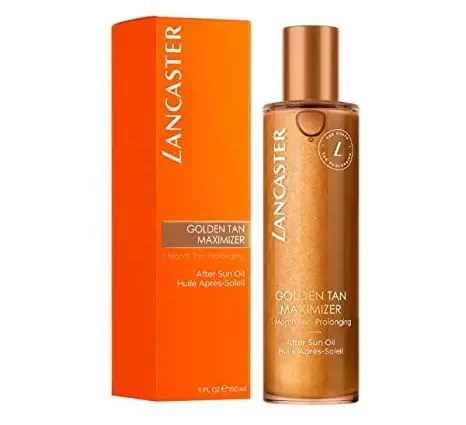Contents
How to use natural oils after sunburn, and in what cases it is not worth it? Let us explain why we recommend After Sun cosmetics as an alternative to a natural product.
After sun oil: what are the benefits
It is known that natural oils have a rich composition and many properties that are beneficial for the skin.
Fatty acids Omega-3, Omega-6, Omega-9 nourish the skin and promote the integrity of the hydrolipid mantle.
Vitamins and trace elements provide antioxidant protection and skin regeneration.
The lipid layer that oils form on the surface of the skin prevents water from evaporating.
However, for all its wonderful properties, pure vegetable oil or thick nourishing cream with a high fat content – not the best sunscreen.
Natural oils do not save from burns.
Dehydrated and sun-damaged skin needs moisturizing rather than nourishing care. It’s no coincidence that after-sun formulas have light, cool textures and include ingredients that can:
saturate the skin with moisture;
soothe;
cool down.
Vegetable oil or nourishing oil cream are not capable of providing a triple effect. Medical expert Vichy Ekaterina Turubara points to another significant disadvantage:
Nourishing oil-based cream for photodamaged skin may become superfluous. The fatty film does not allow moisture to evaporate, but at the same time it interferes with the cooling of tissues. That is why the popular coconut oil, alas, is not the most effective replacement for a specialized after-sun remedy.
But that’s not all! Heavy oils have a comedogenic effect, can cause skin irritation after sunburn, especially sunburned.
However, putting an end to vegetable oils is not worth it. Just apply them without fanaticism, little by little. For example, add a few drops to your moisturizer or “seal” the moisture in your skin by applying it over a milk or body lotion.
Best Natural After Sun Oils
This is where coconut oil lovers will be disappointed. Yes, it helps to get an even tan. Yes, it nourishes and protects the skin during sunbathing by forming a waterproof lipid barrier on the surface. But it will not be able to restore the skin after sunburn, and even more so after a burn.
After tanning, light oils and shea butter are suitable.
For these purposes, oils of a lighter consistency with good penetrating power are suitable. These include neither coconut oil nor everyone’s favorite olive oil. And what can be taken into account?
Jojoba oil. Liquid wax, similar in composition to sebum, quickly penetrates the epidermis without leaving a greasy film. Has restorative properties.
Avocado oil. Contains skin-related fatty acids and vitamin A, easily absorbed, promotes skin regeneration.
Shea butter. Despite the fact that it is a butter, that is, a solid oil, it has a rich composition and outstanding restorative properties, it is easily integrated into the lipid layer of the skin. Cosmetics manufacturers often include it in after-sun and burn formulas. In the list of ingredients, shea butter can be hidden under the complex name Butyrospermum Parkii or the simple and understandable Shea Butter.
Heavy, thick oils and most butters that form a waterproof film on the surface of the skin are not suitable for skin care after the beach and when signs of photodamage appear.
Cosmetic mixtures of oils after sunburn
Vegetable oils are included SOS balms after sunburn. These are carefully balanced formulas with a precisely calculated dose of lipids that help restore the hydro-lipid mantle damaged by UV radiation. Most often, shea butter appears in the composition of balms.
Balms have a richer texture compared to moisturizing gels and milk, which does not prevent them from being absorbed well without leaving a greasy film on the skin. This is one of the important advantages of ready-made cosmetics over homemade mixtures.
Which oil is better to choose: cosmetic or natural
If you are one of the craftsmen who masterfully compose their own oil mixtures, and their effectiveness has been confirmed by practice, lubricate the skin after sunburn in any way you like. However, it is better not to joke with sunburn.
An overview of after-sun products with oils
Balm to restore the skin with sunburn Capital Idéal Soleil, Vichy quickly absorbed, instantly reducing the burning sensation and discomfort. Completely soothes the skin a day after application. Ingredients: shea butter, epiloba extract, vitamin E, Vichy Spa thermal water.
Cicaplast balm B5, La Roche-Posay A soothing multi-restorative treatment for all occasions. Features a rich yet non-greasy texture. Soothes irritations on the skin of the body and face, including lips. The formula includes panthenol (soothes), copper, manganese, zinc complex (antibacterial effect), madecassoside (promotes regeneration), shea butter (softens, restores the hydrolipidic mantle).
Soothing after-sun milk Sublime Sun, L’Oréal Paris saturates the skin with moisture, softens it and restores it. Absorbs instantly – you can immediately dress after application.
Refreshing after-sun cream Ambre Solaire “Expert Protection”, Garnier, pleasantly cools and soothes the skin after sunbathing. In the composition – shea butter (karite), which gives the texture of the cream tenderness, and the skin – softness and smoothness. Hypoallergenic.










